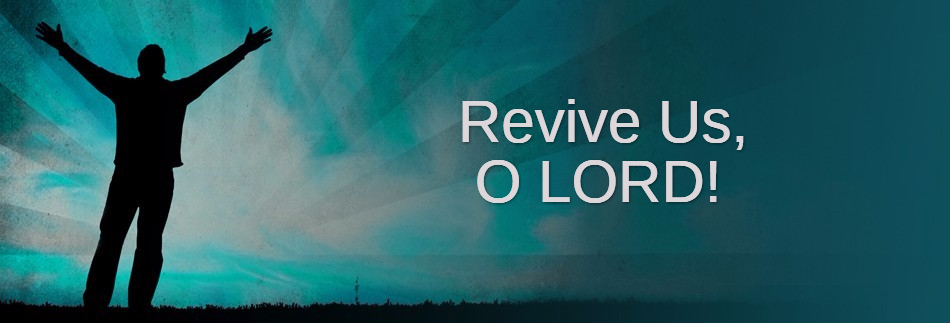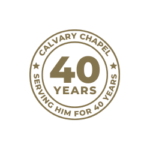
We are just a week away from the mid-term elections—which many believe to be the most important mid-terms of our life-time.
Many Americans who are discontent or even angry with the president over his rhetoric and policy positions are saying, “We need a change”, “we need a change if our country is going to be put on the right track…”
I hear many people saying, “We need a change”—but I don’t hear many saying, “We need to change!” I believe that, as a nation, what we really need more than a change in leadership is a change of heart.
It’s true this country desperately needs a change in direction—but direction away from sin and back to God—in other words what we really need is national repentance and revival! This country was birthed through prayer and repentance as our founding fathers wanted this nation to be a place where the gospel could be proclaimed, and God would be glorified.
But even before the signing of the Declaration of Independence and the Revolutionary War—our nation went through some pretty black periods not unlike what we see going on in our country today.
Back then, God saw fit to answer the moral decay in the colonies by raising up two preachers: Jonathan Edwards and George Whitefield. Their preaching changed the spiritual direction of America before the Revolution and became the catalysts for what came to be known as “The First Great Awakening.”
Jonathan Edwards, as a young man and a new husband, took over his father-in-law’s prestigious church in Northampton, Massachusetts. Edwards’ description of the condition of the young people in Northampton when he first got there sounds much like the conditions among young people today:
“Licentiousness for some years greatly prevailed among the youth of the town: there were many of them very much addicted to night walking and frequenting the tavern, and lewd practices wherein some by their example exceedingly corrupted others.”
But in 1734, while Jonathan Edwards was preaching a series of sermons on justification by faith alone—something began to happen—people started getting saved! It started with the youth and then spread to the adults—both young and old. One reporter noted—
“…in the spring and summer of 1735, the town seemed to be full of the presence of God; it never was so full of love, nor of joy, and yet so full of distress, as it was then.” (‘distress’ because so many were under the conviction of God!)
By 1736 Edwards’ church had 300 new converts, and news of the revival had spread throughout New England. The revival shifted into high gear in 1740 when George Whitefield arrived in America.
Whitefield had already risen to a place of prominence as one of the key figures in the Wesleyan revivals in England. In those days’ evangelists didn’t have microphones and sound systems to amplify their voices, but Whitefield didn’t need it—God gifted him with a powerful voice.
At Bristol, England, he had preached to 20,000 people in the open air and it was said that all could hear him. In New England, the revival reached its peak in 1741 and it was in July of that year at Enfield Massachusetts, that Edwards preached his most famous sermon, “Sinners in the Hands of an Angry God.”
In a little over two years, from 1740-1742, some 25 to 50 thousand people were added to the New England churches—out of a total population of only 300,000! The revival eventually spread from New England into New Jersey, Pennsylvania and the middle colonies—and then into Virginia and the southern colonies.
Unfortunately, these movements of God don’t last forever, and by the close of the 1700’s, this nation, once again, seemed headed for disaster. You see up until that time thousands of colonial Americans clustered mostly along the Eastern seaboard—but now they began to pull up roots and head West through the Cumberland Gap.
Conditions at that time didn’t exactly promote spiritual passion.
You see, they had all left their communities and home churches behind them and once out into the frontier, life became rough and the result—morals declined, and lawlessness abounded.
One writer describes what it was like:
“Corn liquor flowed freely…gun and rope settled far too many legal disputes. The West was crowded with thieves and murderers, with neither courts of law nor public opinion to raise a rebuke.” Sexual sin abounded.
Another author, in writing of this period, said,
“Christians who cared about the souls of men and the future of the country saw the peril. If such a spiritual drift should continue among the thousands of settlers already in the Alleghenies and beyond, it could bring down the judgment of God upon the entire young nation. Yet only a thin system of trails and waterways connected the colonies with that vast wilderness beyond the mountains. Humanly speaking, it seemed impossible for godly men to change the course of events.”
Yes, impossible for man—but God graciously intervened in a mighty way with what is now known as “The Second Great Awakening.”
Most historians pinpoint Kentucky’s Logan County about 1799 as the beginning of the revival, when several Methodist and Presbyterian preachers joined together to preach the gospel with a strong emphasis on repentance—soon word of a mini-revival began to spread.
Kentuckians came from miles around—the crowds grew, and soon visitors had to camp out for one, two or three nights. Men chopped down trees and made split log benches to accommodate the crowds creating a “church in the wilderness”—and ‘camp-meetings’ were born.
Everything came to a climax at a great meeting that took place in Bourbon County’s Cane Ridge in August of 1801. It extended over several days and drew crowds estimated as high as 15,000—an incredible number of people in view of the small population in the area at that time. The revival spread and had a profound effect on the lives and morals of society as thousands were swept into the Kingdom and into churches—more than 10,000 in Kentucky alone between 1800 and 1803.
But the greatest revival our nation has ever seen to date began in 1857 and its effect was felt for 40 years—it began in a movement of prayer and it was sustained by a movement of prayer.
The spiritual conditions in the United States deteriorated in the middle of the 19th century as people were making money “hand over fist,” and so their prosperity led to apathy and apathy led to apostasy as they turned their backs on God.
But a man of prayer, Jeremiah Lanphier, who was a stockbroker on Wall Street and who was grieved by all the carnality and depravity he saw going on around him, started a prayer meeting in the upper room of the Consistory Building of the Dutch Reformed Church in Manhattan.
He had advertised it, but that first week only 6 people out of a population of one million showed up. But the week after there were 14, and then 23—then they decided to meet every day. Soon they filled the Dutch reformed Church, the Methodist Church on John Street—and then every public building in downtown New York.
Famed newspaper editor Horace Greeley sent a reporter with horse and buggy riding around to the prayer meetings to see how many men were praying. In one hour, he could only get to 12 meetings, but he counted 6100 men—then the spiritual damn burst and a landslide of prayer began.
Soon, it seemed that the whole city of New York was shutting down at noon for prayer—then people began to be converted, 10,000 a week in New York City alone. The movement spread throughout New England—church bells would sound calling people to prayer at 8am, 12noon, and at 6pm.
The revival went up the Hudson and down the Mohawk rivers—every church was packed beyond capacity! Baptists had so many people to baptize, they couldn’t get them into their churches, so they went down to the river, cut a big square hole in the ice, and baptized them in the cold water!
The revival spread through much of the United States—in one year, more than a million people were converted. The revival crossed the Atlantic, broke out in Northern Ireland and Scotland, in Wales and England, and then in South Africa, South India—and wherever else there were evangelicals there was revival.
There were other preachers used by God during this time to help spark or fan the fires of revival—men like Charles Finney, D.L. Moody and later on Billy Sunday. Now I bring all of this up because I believe that our nation is ripe once again for revival—in fact we stand on the precipice of judgment and the only thing that is going to save us is another revival and great awakening.
But where and how does revival start?
In the late 1800’s there was a great evangelist known as Gypsy Smith—he traveled around the world twice preaching in every continent and in many different countries the gospel of Jesus Christ—and wherever he preached revival broke out.
One day a delegation of people from a certain community came to him and said, “Rev. Smith, we desperately want to see revival in our area, what can we do?”
Gypsy said, “I’ll tell you exactly what to do and how it will come about. You go home, lock yourself in your bedroom, take a piece of chalk, draw a circle on the floor, kneel in that circle and pray fervently and brokenly that God would start a revival in that circle.”
Folks, that’s always where revival starts—with you! Not with your spouse or your neighbor or your co-workers—but with you and me personally! Remember the famous injunction and promise the Lord gave us in 2 Chronicles 7:14—
2 Chron. 7:14
If My people who are called by My name will humble themselves, and pray and seek My face, and turn from their wicked ways, then I will hear from heaven, and will forgive their sin and heal their land.
May the LORD God Almighty revive His Church and bring another Great Awakening to this land!

